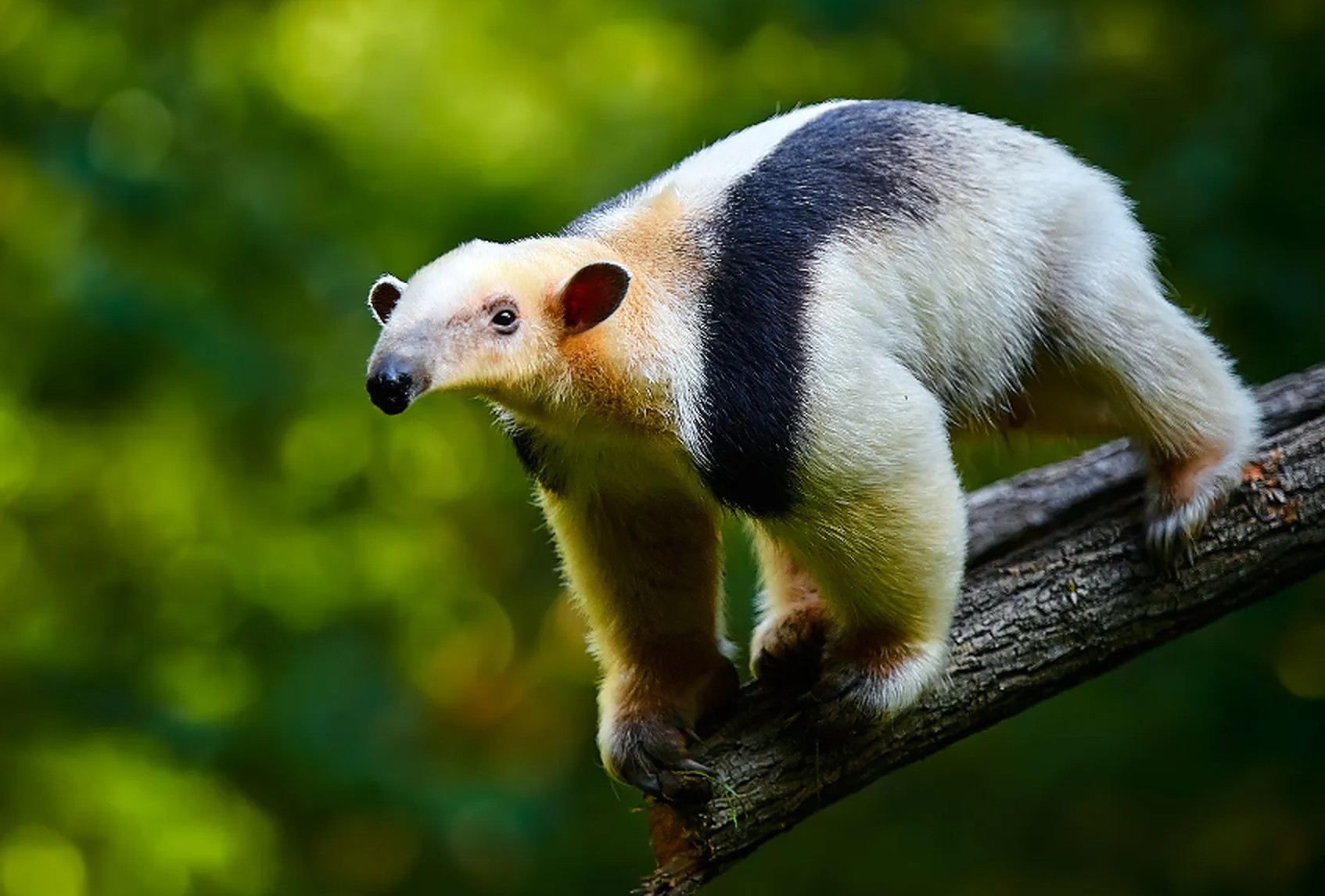
Anteaters are fascinating creatures that capture the imagination with their unique appearance and behavior. With their long snouts and sticky tongues, these intriguing mammals have evolved to thrive in specific habitats and feed on a diet consisting primarily of ants and termites. In this article, we will delve into the world of anteaters and uncover 15 captivating facts about these remarkable animals.
The Anteater Family
Anteaters belong to the family Vermilingua, which means “worm tongue” in Latin. This family comprises four distinct species: the giant anteater, silky anteater, northern tamandua, and southern tamandua. Each species possesses its own distinct characteristics and adaptations.
Giant Anteaters
The giant anteater (Myrmecophaga tridactyla) is the largest of all the anteater species. It can grow up to 7 feet long, including its tail, and can weigh between 40 and 100 pounds. Despite their large size, giant anteaters have small head and a long snout, which they use to search for ants and termites.
Silky Anteaters
In stark contrast to the giant anteater, the silky anteater (Cyclopes didactylus) is the smallest anteater species. It measures only 4 to 5 inches in length, excluding its tail, which can add an additional 6 to 7 inches. Silky anteaters are known for their dense, silky fur, which ranges in color from pale beige to dark brown.
Tamanduas
Tamanduas are medium-sized anteaters that have prehensile tails, which means they can grasp and hang onto tree branches. The northern tamandua (Tamandua mexicana) and the southern tamandua (Tamandua tetradactyla) are the two species of tamanduas. They are known for their distinct black-and-white coloration, which serves as a form of camouflage in their forest habitats.

Anteater Habitat
Anteaters can be found in a variety of habitats, including forests, grasslands, and savannas, primarily in Central and South America. The specific habitat preferences vary among the different species of anteaters, but they all require areas with an abundant supply of ants and termites, their primary source of food.
Feeding Habits
Anteaters have an extraordinary adaptation for feeding on ants and termites. Their long, sticky tongues can extend up to two feet in length and are coated with sticky saliva that allows them to easily capture their prey. In just one minute, an anteater can flick its tongue in and out more than 150 times to capture thousands of insects.
The Anteater’s Snout
The snout of an anteater is uniquely designed to aid in their feeding habits. It is long and tubular, resembling a straw, and contains no teeth. Anteaters use their snouts to probe into ant and termite mounds, breaking them open and lapping up the insects with their tongues. The snout is also equipped with powerful muscles, allowing the anteater to tear apart termite nests with ease.
Efficient Digestive System
To extract the maximum nutritional value from their insect-rich diet, anteaters have evolved an efficient digestive system. Unlike many other mammals, anteaters have no teeth for chewing their food. Instead, they swallow large amounts of ants and termites whole, relying on their muscular stomachs and intestines to break down and process the insects.

Slow Metabolism
Anteaters have a slow metabolic rate, which enables them to conserve energy and thrive on their specialized diet. Due to their low-energy lifestyle, anteaters can survive on a relatively low number of ants and termites each day. Giant anteaters, for example, consume around 35,000 ants and termites on a daily basis, while smaller anteater species require fewer insects.
Excellent Sense of Smell
One of the most remarkable attributes of anteaters is their exceptional sense of smell. Their long snouts are equipped with a highly sensitive olfactory system that allows them to detect the scent of ants and termites from a considerable distance away. This keen sense of smell helps anteaters locate their food sources with great accuracy.
Nocturnal Creatures
Most species of anteaters are nocturnal, meaning they are primarily active during the night. This behavior helps them avoid the scorching daytime heat and potential predators. Nocturnal habits also align with the activity patterns of their prey, as ants and termites are more active during the cooler nighttime hours.
Solitary Lifestyle
Anteaters are solitary creatures that prefer to live alone rather than in social groups. Each individual has its own home range, which it marks with scent glands located on its hindquarters. While these ranges may overlap, anteaters generally avoid encounters with others of their kind unless it is during the breeding season.
Anteaters and Predators
Despite their formidable appearance, anteaters are not aggressive animals. In fact, their primary defense mechanism is their ability to blend into their surroundings and remain motionless when threatened. Their coarse fur, which often resembles the bark of trees, provides excellent camouflage against potential predators such as jaguars and large birds of prey.

Reproduction and Offspring
Anteaters have a relatively slow rate of reproduction. Female anteaters give birth to a single offspring at a time, and the gestation period can range from 120 to 190 days, depending on the species. The young anteater, known as a pup, rides on its mother’s back for the first few months of its life until it is able to fend for itself.
Conservation Status
Several factors, including habitat loss, poaching, and road accidents, have led to a decline in anteater populations. The International Union for Conservation of Nature (IUCN) lists the giant anteater as vulnerable, while the silky anteater and tamandua species are classified as least concern. Efforts are being made to protect anteater habitats and raise awareness about the importance of preserving these unique creatures.
Conclusion
In conclusion, anteaters are captivating animals with a range of intriguing adaptations that allow them to thrive in their specialized habitats. From their long snouts and sticky tongues to their solitary lifestyle and exceptional sense of smell, these fascinating creatures continue to inspire awe and curiosity. By understanding more about anteaters, we can appreciate the vital role they play in their ecosystems and work toward their conservation.
Frequently Asked Questions (FAQs)
How long can anteaters’ tongues get?
Anteaters have tongues that can extend up to two feet in length, allowing them to reach deep into ant and termite mounds to capture their prey.
Do anteaters eat anything besides ants and termites?
No, anteaters are specialized insectivores and primarily feed on ants and termites. Their entire diet consists of these small insects.
Are anteaters dangerous to humans?
Anteaters are not considered dangerous to humans. They are generally shy and non-aggressive animals. However, it’s important to remember that wild animals should be observed from a safe distance and not approached or disturbed.
Can anteaters swim?
While anteaters are not natural swimmers, they are capable of swimming if necessary. They use a doggy paddle motion to stay afloat and move through the water.
Can anteaters be kept as pets?
Anteaters are wild animals and are not suitable to be kept as pets. They have specific dietary and environmental needs that are challenging to replicate in a domestic setting. It is illegal to own an anteater as a pet in many countries to protect their populations and welfare.
Was this page helpful?
Our commitment to delivering trustworthy and engaging content is at the heart of what we do. Each fact on our site is contributed by real users like you, bringing a wealth of diverse insights and information. To ensure the highest standards of accuracy and reliability, our dedicated editors meticulously review each submission. This process guarantees that the facts we share are not only fascinating but also credible. Trust in our commitment to quality and authenticity as you explore and learn with us.


